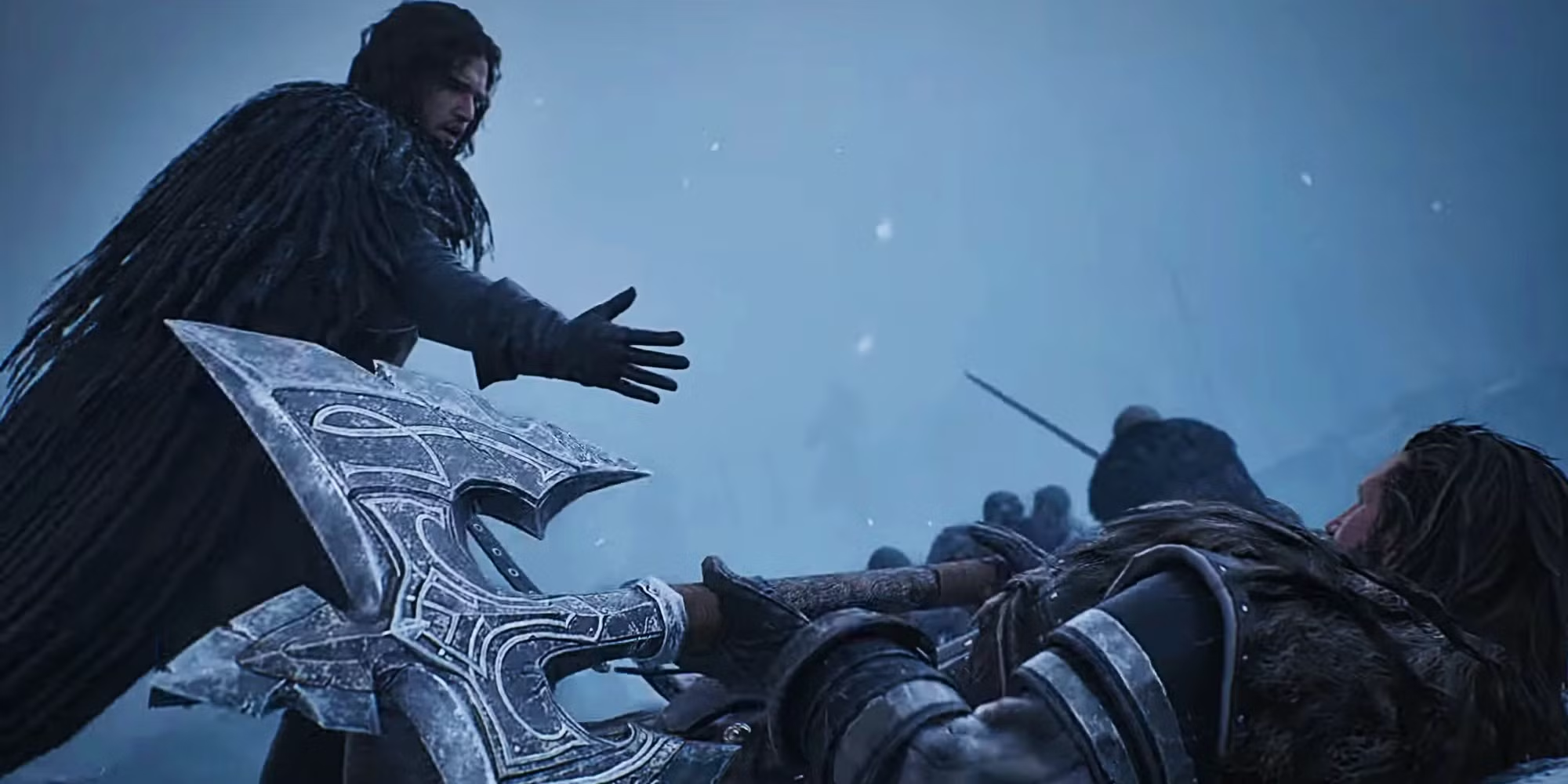Rowley Irlam, who worked on the HBO drama for five seasons, shares secrets behind the series’ most epic battles: “We wanted to show the horror of war.”
Jon Snow, Arya Stark and the rest of the best fighters on Game of Thrones owe their combat skills to the various masters they trained under along the way in Westeros and beyond — a list that includes Rowley Irlam, the award-winning English stunt coordinator who presided over the HBO drama’s biggest set pieces starting with season five.
As with most stories related to Thrones, Irlam’s introduction to the world of ice and fire begins with both of those elements: ice during the battle in season five’s “Hardhome” and plenty of fire one episode later in “Dance of the Dragons.” Indeed, while Jon Snow’s battle against the White Walkers draws the most attention when fans look back on the epic fifth season, it was Daenerys Targaryen’s first dragon-riding flight that solidified Irlam’s enthusiasm for the Game of Thrones universe.
“I remember in the VFX previews, they had the dragon torching one guy, then he turns the other way and he torches two guys, and then another two guys,” he tells THR. “They asked me what I thought, and I said, ‘I think you should try and torch four guys, then six, then another six and then two more.’ I looked at everyone around the table thinking they must have thought I was coming on a little strong — but very quickly, we got the nod.”
It was a crucial lesson for Irlam, 49: “I had an opportunity here to not squander HBO’s resources. I had some free rein to try and make this as big and as dynamic as possible.” Not that Thrones wasn’t already huge. By the time Irlam stepped into the ring, the “Blackwater” episode’s massive water-battle sequence and “Watchers on the Wall,” about the Wildlings’ attack on the Night’s Watch, already were on the board, with the latter installment receiving a limited Imax release. But Irlam’s first key takeaway from season five (see: maximum amounts of dragon fire whenever and wherever possible) nonetheless followed him through the rest of his time on Thrones, paving the way for some of the most intense combat sequences in the show’s history, such as “Battle of the Bastards,” the brutal season six showdown between Jon Snow and Ramsay Bolton.
“You hope that in the middle of your career, you haven’t done your finest work,” says Irlam. “But the reality of the situation is, if I get through the whole of my career and the best thing I ever did was ‘Battle of the Bastards,’ then I’ll settle for that.”
Featuring a ferocious fight for Winterfell among hundreds of soldiers on foot and horseback, “Battle of the Bastards” played right to Irlam’s strengths. Long before Game of Thrones, Irlam started his career riding horses for live jousting shows (“You earned 60 pounds if you fell off and 40 pounds if you didn’t”) before getting his first industry job on 1991’s Robin Hood: Prince of Thieves. Irlam’s horse-riding background and his Thrones-generated comfort around VFX collided on the “Bastards” battlefield, facing the challenge of rendering a compelling war scene while maintaining safety on set.
“Your suspension of disbelief is key to all of it,” says Irlam, referring specifically to “Bastards” but broadly to the success of Thrones‘ battle scenes. “We’re trying to make something look as energetic and as dynamic as possible, but we’re also trying to keep everybody safe. Collateral damage is not acceptable to us. We want everyone to go home and come back the next day.”
Another key goal for Irlam: differentiating each battle from the next, whether it’s the fog of war featured in “Bastards” or the mythical terror in the final season’s “The Long Night.” As the most recent and final example of a war scene finding its own sense of character, Irlam points to the penultimate episode of the series, “The Bells,” in which King’s Landing burns to the ground.
“We wanted to show the horror of war,” he says. “We wanted to make it unpleasant. We didn’t want it to feel like entertainment, particularly. We tried to think of the most nasty images we could possibly conjure up and put them onscreen: an amputee with his legs dripping blood, children burning. … It wasn’t trying to be gratuitous. We’re trying to show what people can do to other people.”
What’s more, in “The Bells,” Irlam and his team are responsible for effectively playing the role of Daenerys. The Mother of Dragons herself is not seen once the King’s Landing carnage begins in earnest, leaving it up to Irlam and his battle-hardened crew (including Paul Shapcott, Radoslav Parvanov and the Night King himself, Vladimir Furdik) to render her villainous turn through fire and blood.
“Not everyone can live happily ever after,” says Irlam. “Even the people who survive Game of Thrones are heartbroken. That’s the whole point: It’s a nuclear war. No one wins. In war, everyone involved loses. That’s what our take was on it.”
The dragon-powered napalm ceased for Thrones viewers May 19. For Irlam, the work ended nearly a full year earlier. “I immediately went on holiday,” he says. “In fact, I went on several.” Since then, for his work on the final season of Thrones, Irlam has added a fourth Emmy to his shelf. What’s more, he’s back at work within the HBO family, spearheading the stunts on Joss Whedon’s upcoming drama The Nevers. “It’s a different animal entirely,” he teases. “It’s a completely different genre, different period … it’s refreshing to not do something medieval for a change.”
But with HBO officially returning to the Westeros well in the upcoming prequel series House of the Dragon, are Irlam’s days dealing with dragon fire fully behind him? For The Nevers‘ stunt coordinator, never say never.
This story first appeared in a November stand-alone issue of The Hollywood Reporter magazine. To receive the magazine, click here to subscribe.




















![[Book Review] The Blade Itself (The First Law Trilogy) by Joe Abercrombie](https://bendthekneegot.com/wp-content/uploads/2018/01/1516047103_maxresdefault-218x150.jpg)
















